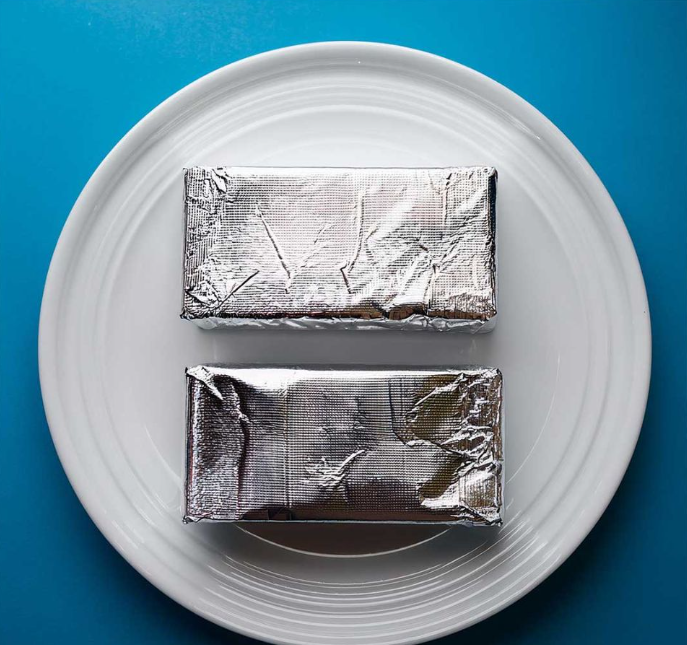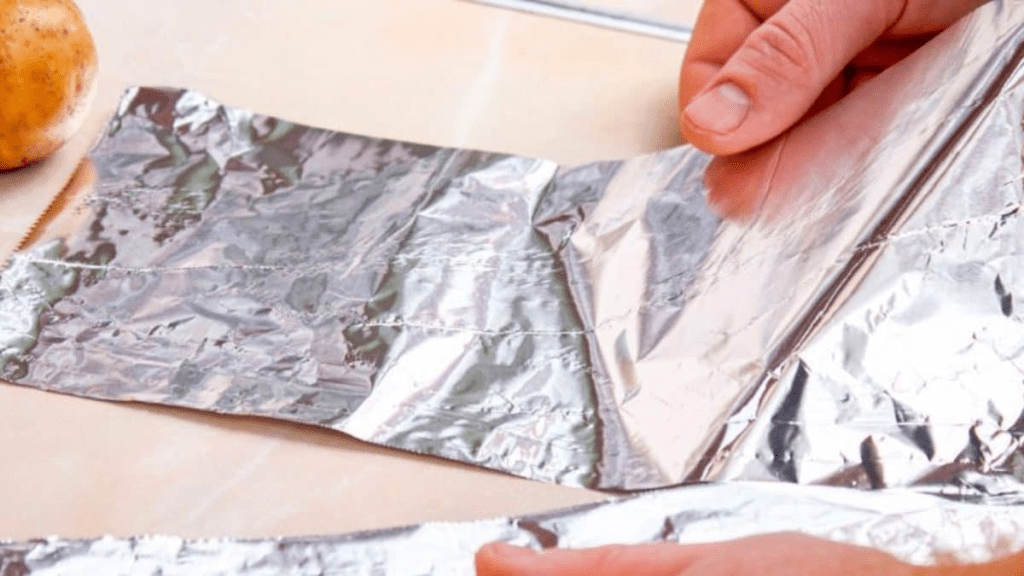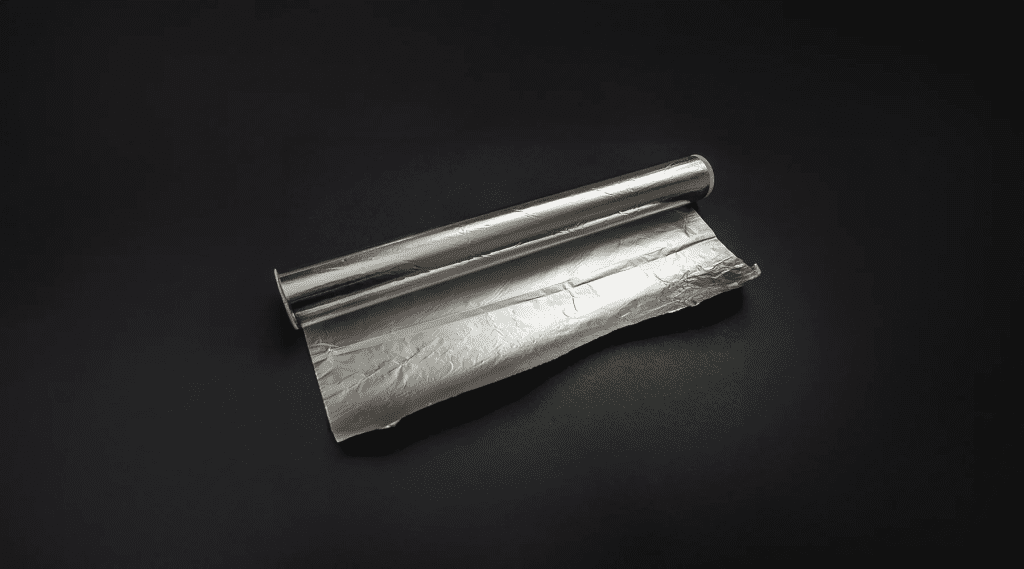Aluminum foil is a must-have in every kitchen, whether you’re wrapping food, baking, or using it for household hacks. If you’ve ever noticed that one side of aluminum foil is shinier than the other, you’re not alone. This small detail often leaves people wondering if there’s a specific reason for the different finishes and whether it matters for cooking or storage. In this article, we’ll uncover the truth behind the shiny and dull sides of aluminum foil, explain the science behind its production, and offer some tips on when to use each side.
The Manufacturing Process of Aluminum Foil

To understand why one side of aluminum foil is shinier than the other, it’s important to grasp how aluminum foil is made. Aluminum foil is produced by rolling large slabs of aluminum into thin sheets through a process called tandem rolling. During the final stage of this process, two layers of aluminum are rolled together and then separated. The side that comes in contact with the rollers becomes shiny, while the other side, which does not, retains a matte finish. This difference in appearance is purely a result of the manufacturing process, not a purposeful design to make one side function differently from the other.
Why One Side is Shinier Than the Other
The primary reason for the difference between the shiny and dull sides of aluminum foil lies in the rolling process. When aluminum is rolled in the final stage, one side is pressed against highly polished steel rollers, which gives it a reflective, shiny surface. The other side, which faces away from the rollers, remains dull or matte because it doesn’t get the same polishing treatment.
Do the Sides of Aluminum Foil Serve Different Functions?
A long-standing myth suggests that one side of aluminum foil is better suited for certain tasks, such as cooking or wrapping food, than the other. For example, many people believe that the shiny side should always face the food to reflect heat better. However, the truth is, there is no significant functional difference between the shiny and dull sides. Both sides of the foil perform the same when it comes to blocking light, moisture, and air, and both offer the same level of heat resistance.
Best Practices for Using the Shiny Side of Aluminum Foil
While there is no major difference in how each side works, the shiny side does reflect a bit more heat than the dull side. This means the shiny side can be marginally more effective when you want to retain heat, such as when wrapping hot foods to keep them warm. Similarly, if you’re broiling or grilling, using the shiny side to reflect heat upwards can help maintain the temperature of the food. However, the actual difference in heat reflectivity is minimal, so it won’t drastically affect cooking outcomes.
Optimal Situations for Using the Dull Side of Aluminum Foil
The dull side of aluminum foil is just as effective for most kitchen tasks as the shiny side. Some people prefer using the dull side for aesthetic reasons, as it reduces glare in brightly lit kitchens. The matte surface may also be preferred when handling foods that tend to stick to the foil, although both sides technically offer the same non-stick properties. Additionally, the dull side provides a better surface for writing labels or notes if you’re using the foil to wrap leftovers.
Debunking Myths and Misconceptions About Aluminum Foil
One of the most common misconceptions is that the shiny side is meant for cooking, while the dull side is meant for storage. Another myth suggests that the shiny side should always face food to maximize heat retention. Both of these ideas are incorrect. The difference in appearance is simply a byproduct of the manufacturing process and has no impact on the foil’s performance in most scenarios. The only time there’s a difference is if you’re using non-stick aluminum foil, which specifically indicates which side should face the food.
Scientific Studies and Expert Opinions on Aluminum Foil

Multiple scientific studies have examined the thermal properties of aluminum foil, and experts in material science agree that the difference in heat reflectivity between the shiny and dull sides is negligible. In fact, the heat reflectivity difference is often less than 10%, making it insignificant in most cooking situations. Cooking experts and chefs also confirm that there’s no need to worry about which side faces the food, as both sides perform equally well in tasks such as grilling, baking, or roasting.
Practical Tips for Everyday Use of Aluminum Foil
Although there’s no strict rule for which side of the foil to use, here are some practical tips to help you decide:
- Use the shiny side for reflecting heat: If you want to trap heat, such as when wrapping food to keep it warm, use the shiny side outward.
- Choose the dull side for non-reflective tasks: If bright light bothers you or you prefer a more subtle look, the dull side might be more suitable.
- Use either side for cooking and baking: Both sides of the foil work equally well for most culinary purposes, so feel free to use whichever side is more convenient.
- Label on the dull side: If you need to write directly on the foil, the dull side provides a better surface for marking.

Conclusion: The Shiny and Dull Sides of Aluminum Foil – It’s All About Preference
In summary, the shiny and dull sides of aluminum foil are simply a result of the manufacturing process, and there’s no functional difference between them for most kitchen tasks. While the shiny side reflects slightly more heat, the difference is minimal and won’t drastically affect your cooking results. Ultimately, whether you use the shiny or dull side often comes down to personal preference, aesthetics, or specific situational needs.
Now that you know the truth behind this kitchen staple, you can confidently grab that roll of aluminum foil without worrying about which side to use. The next time someone tells you there’s a “right” side, you can set the record straight!


